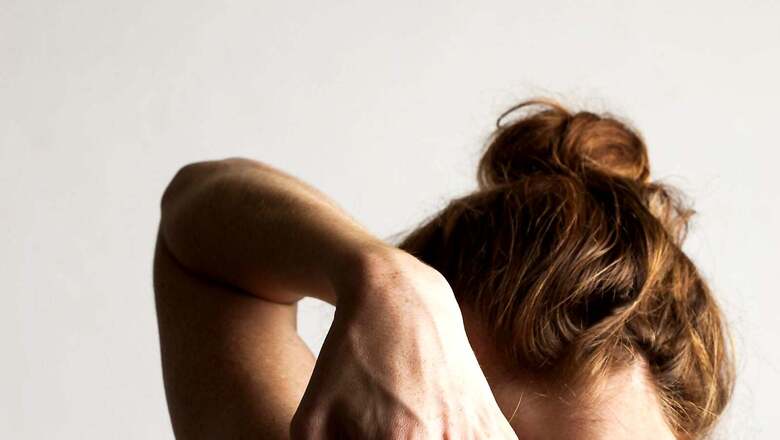
views
Eczema is a common skin ailment that primarily affects infants, though it can sometimes affect adults. The most prevalent type of eczema is known by the medical term atopic dermatitis. Flaky, itchy, and dry skin are common signs of this illness, albeit they might eventually become bothersome. However, skin diseases are frequent during the monsoon. As the degree of atmospheric humidity rises, our skin becomes more prone to allergies and rashes. During the rainy season, it is essential to follow a healthy skin care routine because the increased oil release might irritate skin. It might be challenging to distinguish between skin infections and eczema since skin infections can appear more severe. As a result of the eczema sufferer’s skin’s propensity for bleeding and breaking, viruses, bacteria, and other organisms can enter the body and cause skin infections.
How to tell if you have monsoon skin infection or eczema?
Checking for any evidence of infection is the most crucial stage in determining if a person has eczema or a skin infection. Eczema is typically scaly, itchy, and red. But when eczema flares, the person’s skin may look oozy, crusty, or weepy as a result of the inflammation.
Bacteria that typically cause skin infections during the monsoon season are red, swollen, and hot with a sensitive rash that is accompanied by pus. Viral skin infections, on the other hand, cause painful and/or itchy blisters or red welts. Additionally, fungal skin infections typically manifest as red, scaly, itchy rash with or without pustules, and they generally happen during the monsoon season. Overall, it can be claimed that a person is more likely to have a skin infection if they have orange or yellow-colored crusts, pus-filled blisters, swollen stripes, or red pimples covering their skin.
Look for obvious symptoms like fever to determine whether a child or an adult has eczema or a skin infection. A skin illness that needs quick medical attention is extremely likely to be the cause of a spreading rash that is accompanied by fever. Additionally, eczema has a well-established course of therapy, unlike skin infections. As eczema treatment aggravates skin infections, if the person’s rash is getting worse after receiving treatment, it may be that person has a skin infection.
Skin conditions brought on by the monsoon that resemble eczema but aren’t
There are many skin disorders that might cause symptoms resembling eczema during the monsoon season. Listed here are a few of the ailments:
Scabies: Scabies is an infectious condition in which microscopic bugs eat their way into the epidermis and lay their eggs. Scabies causes a rash that looks like pimples and severe itching. But unlike eczema, this condition’s itching increases worse at night. On areas of the skin where the bugs burrow, a few tiny raised lines that seem flesh-colored or grey-white may also be seen.
Psoriasis: Psoriasis is a chronic disorder that develops when the body’s immune system erroneously attacks the skin. Similar signs of eczema and psoriasis include dry, cracked skin, itching, and scaly, red spots. Eczema, however, has patches that are thinner and can leak fluid from them.
Hives: The pink or red welts can range in size from small to huge. In the case of hives, they can show either singly or in clusters. While the itching is similar to that of eczema, hives might appear for a day, disappear, then reappear and last for days or weeks. Hives can also cause swelling of the eyelids, lips, and throat in the individual who has them.
Ringworm: This fungus infection can cause ring-shaped skin patches that can be red or pink in colour. The centres of the patches clean up first once treatment begins, and the patches typically have a circular shape.
Conclusion: Whether an adult or child has eczema or another skin illness, it is always a good idea to see a dermatologist or paediatrician so that they can accurately diagnose the condition, determine its origin, and begin a treatment regimen. It is best to consult a specialist and seek the appropriate therapy because not every swelling or redness on the skin is indicative of an illness.
What is Eczema?
Skin affected by eczema is typically dry, cracked, and irritating. Atopic eczema, which is the most prevalent variety and is brought on by allergies, is also known as contact eczema, which flares up when a person comes into contact with allergens like nickel or rubber, discoid eczema, which manifests as coin-shaped spots, and seborrheic eczema (eczema of the scalp).
How to handle it?
Before they find a treatment that works for them, most people need to try a few different ones. Moisturizers work best for eczema treatment. You must oil yourself like a swimmer swimming across the Channel. Morning and night, moisturise your body, and have a bottle of moisturiser in your luggage for reapplication during the day. Different emollients can be prescribed by your doctor. However, not all of them will be effective for all people. Apply to damp skin right after a shower to help retain moisture. Maintain a strict regimen even if you are symptom-free.
Read all the Latest News and Breaking News here



















Comments
0 comment